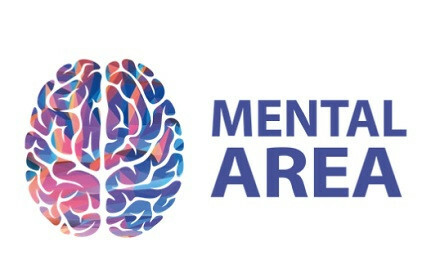Mental Area: Self-regulatory neurofeedback to treat ADHD
ADHD, or attention deficit hyperactivity disorder, is one of the most complex psychological disorders, due to the set of symptoms and variables that come into play in it.
Fortunately, there are now effective psychotherapeutic interventions to help people with this disorder; treatments away from the side effects of psychotropic drugs that use the development of new technologies to provide the patient with the means with which to manage her problems.
This time we will talk about one of these innovative forms of therapy with Jaume Esteve, from the Mental Area center from Barcelona, to explain the characteristics of the treatment of ADHD with self-regulation neurofeedback.
- Related article: "The 4 differences between Biofeedback and Neurofeedback"
Jaume Esteve: self-regulation neurofeedback to treat ADHD
Jaume esteve perez is a psychologist and coordinator of the Center's Psychology and Neuroscience area Mental Area, located in the Catalan capital. This entity is characterized by its firm commitment to neurofeedback as an therapeutic resource, and in this case, We will learn about the use that it makes of one of its variants, self-regulation neurofeedback, when treating ADHD.
What is self-regulatory neurofeedback and what is needed to apply it to patients?
It is an innovative procedure specialized in brain training that combines techniques from neuroscience, psychology and meditation. Through a team of EEG electroencephalography and a neurofeedback system we can record the electrical activity of the brain non-invasively. Thanks to this system, brain waves are consciously monitored and controlled.

It is specially designed to quickly and effectively learn to self-regulate and self-control the mind. Through specific training we selectively modify the increase or decrease in the power of certain brain waves, which are associated with different mental states. Thanks to these modifications we can improve our mental health, emotional well-being and increase mental capacities.
This technique starts from the theoretical model of the integrated vision of intelligence, where we can modify cognitive schemes through training from consciousness. Intelligence is integrated into two operating models, executive intelligence (conscious) and computational intelligence (unconscious), and from the perspective of neuroplasticity, by understanding that by learning we change the circuits of the brain.
What are the psychological problems in which its application is most effective?
This technique can be used for a wide variety of psychological disorders and problems, but It is especially indicated for the treatment of attention deficit disorder and hyperactivity ADHD, stress and anxiety, insomnia, depression, fears and phobias and also to improve mental performance such as executive functions, memory and attention.
Regarding the use of self-regulatory neurofeedback in the treatment of ADHD, what advantages does it offer compared to other methods of intervention in patients?
Most of the clinical methods for the treatment of ADHD, contain their own characteristics and usually help people to improve the symptoms; However, this procedure starts from two relevant advantages.
The first has to do with having a mental training specially designed to develop the necessary learning that with practice you allow to be autonomous in the exercise of self-regulation and mental self-control, ensuring that you will be able to continue working and growing in the absence of professional. A Chinese proverb says "Give a man a fish and you will give him food for a day, teach him to fish and you will feed him for the rest of his life."
This procedure is designed to be combined with models of cognitive stimulation, virtual reality intervention, Mindfulness and psychological techniques. In this way we manage to enhance the desired effects and carry out a more personalized treatment adapting to the client's needs.
How is the use of this technology adapted to the treatment of ADHD, taking into account the characteristics of this alteration?
The use of neurotechnology and the latest developments in clinical technology provides professionals in the field of psychology with true support in their treatments. Intervention with specialized technological equipment and obtaining objective data in a qualitative or quantitative way offer the professional help to improve their treatments.
Provide the client and the professional in real time the observation of the functioning of the brain on a television screen, in frequency bands, as well as a recording and analysis of brain activity during the self-regulation neurofeedback session, allows better adaptability to the use of this treatment.
What tasks to apply on a day-to-day basis between sessions is the use of self-regulation neurofeedback combined? That is, exercises to be carried out at home, to consolidate the therapeutic change.
In this procedure we focus on mental training for the consolidation of a therapeutic change. In the psychology center we help to promote the learning necessary for the development of self-regulation and mental self-control, through the use of clinical technology combined with the intervention of the professional. But the main training is the one you do every day through exercises in your free time outside the center, through a specialized training program.
According to neuroscientific knowledge about the process of neuroplasticity In learning, the brain will learn a new skill more efficiently and effectively if in each training session you dedicate a specific time to practice the exercise and You perform the tasks daily, that if, on the contrary, you perform the tasks discontinuously in time and dedicate in each session different time intervals to carry out the exercise.
In your experience as psychologists, what progression does the improvement of ADHD patients follow once they have started using self-regulatory neurofeedback?
As a result of individual differences, each person requires a specific time to carry out psychological recovery. This type of procedure starts with the advantage that the results can be observed in very few sessions and if no change is observed, we proceed very soon to end the intervention with the client.
Most of our clients in different stages of evolution feel calmer and calmer, have a clearer awareness of their problems, improve their cognitive functions, and they have new resources and psychological strategies to face all those difficulties that arise in their daily lives.

